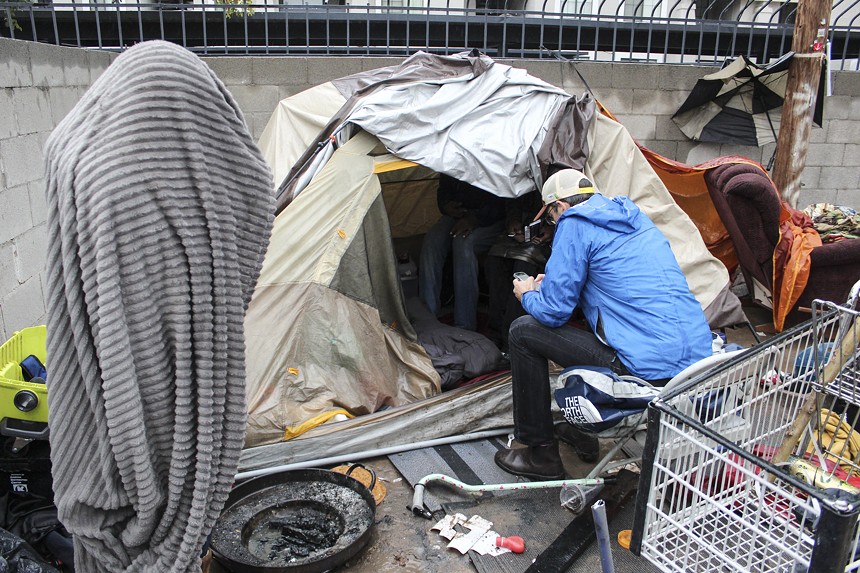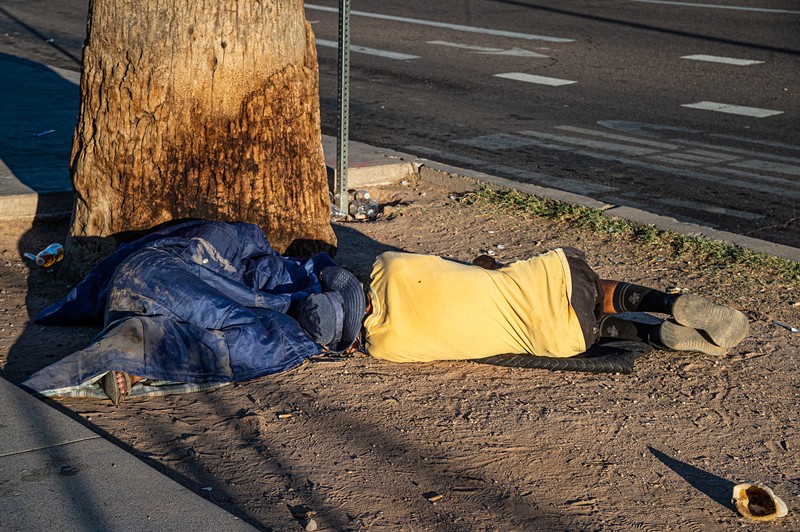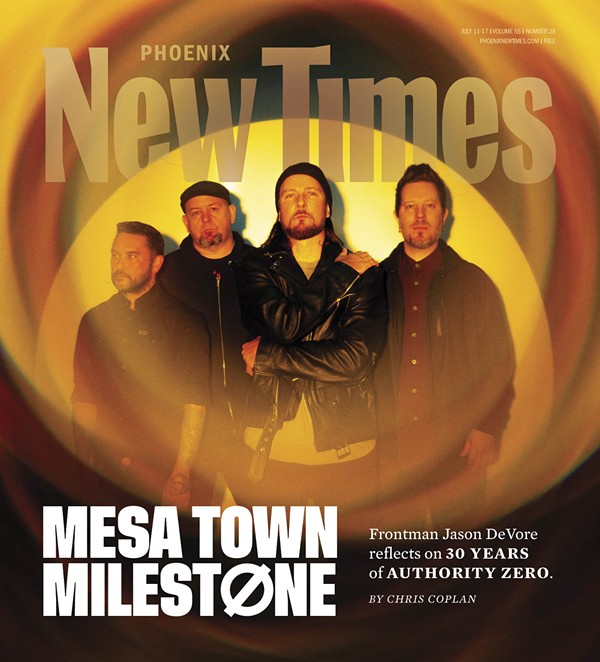The number of people experiencing homelessness in Maricopa County has gone down. Slightly.
But for Phoenix and other cities in the Valley struggling to combat homelessness, even the smallest of steps in the right direction is good news.
On Wednesday, the Maricopa Association of Governments released data from its annual one-day count of unhoused people in the Phoenix metropolitan area. This year’s Point-in-Time Homelessness Count showed only a tiny drop in the number of people experiencing homelessness throughout the county — from 9,642 in 2023 to 9,435 in 2024, a decrease of less than 1%. But more encouraging is where those people were counted.
In the first count since Phoenix cleared out the Zone, the large homeless encampment near the Capitol, the number of unhoused people without shelter dropped by 17%, the data showed. Meanwhile, the number of unhoused people who were sheltered — that is, living in temporary but not permanent housing, such as a city-run shelter — jumped 13%.
To Brian Gruters, the MAG regional homelessness program manager who led the effort, that’s a good sign.
"We don't get too excited about a reduction of 2%,” Gruters told New Times in an interview. “But what we are interested in is seeing a reduction of people living unsheltered and an increase of people being sheltered. The fact that they happened together seems to point to people moving indoors. We definitely consider that a positive."
This year’s PIT Count was conducted on a wet and dreary January morning by a mix of staff and volunteers. New Times also tagged along.
Hundreds of volunteers scoured alleys, parks, riverbeds, streets and doorways across the Valley to hand-count the number of people experiencing homelessness in the region — an imperfect but necessary effort to track the size of the unhoused population over time.
Though heavy rain turned plots of dirt into muddy mires, volunteers were undeterred. They talked to people huddled in tents in those spaces and checked every street in the metro area before crossing each area off on paper street maps.
"We appreciate the coordinators who helped pull off this effort, and the volunteers and paid staff who helped support it,” Gruters said. “And we especially appreciate the people living outside who trusted us to have a conversation about their lives."

Brian Gruters, regional homelessness program manager for the Maricopa Association of Governments, talked with people living in tents near downtown during the association's annual homelessness count in January.
TJ L'Heureux
Chronic homelessness on the rise
While progress has been made since last year, the problem itself remains massive. Since 2018, the report showed, the number of people experiencing “chronic homelessness” has more than doubled, meaning people are living on the streets for longer periods. And while getting them into shelters is a goal, Gruters said, it’s not the solution.“Once people have shelter, you have to find them housing. We want to underscore that's still the project,” Gruters said. “When we see the chronic number goes up, it's just a reminder that we're not connecting people with permanent housing quickly."
Expanding the sheltered population is a start, though, and something Phoenix and other cities have worked to accomplish. Per a press release from the city, Phoenix added 1,072 shelter beds in 2022 and 2023, although nearly half were temporary. The city plans to add 790 new beds through 2025, including a 280-bed shelter on 71st Avenue that will require unhoused people to have references from an “outreach service provider” in order to enter.
As in the county at large, Phoenix’s unhoused population held steady compared with 2023 at slightly more than 6,800. But the unsheltered population dropped by 19% and the sheltered population rose by 15%. The unsheltered population is more prone to undercounting, however — especially since the clearing of the Zone, where many unhoused people congregated and were easier to find.
“Although the number of those living unsheltered in our community is still too high,” Phoenix Mayor Kate Gallego said in a press release, “and we certainly have more work to do to get people into permanent, stable housing, it’s reassuring to know that we are making steady progress getting residents off the streets and into safer situations.”
Aside from the changes among the sheltered and unsheltered populations, this year’s PIT Count reflected a notable change in MAG’s methodology. When collecting demographic information during previous counts, “Hispanic or Latino” was listed as an option for a person’s ethnicity. In 2024, it was added as an option for race.
As a result, the racial makeup of the Valley’s unhoused population shifted significantly. Twelve percent of people surveyed this year said they were Hispanic or Latino. Conversely, the number of people who identified as white dropped from 61% last year to 49% in 2024. White people are now underrepresented among the unhoused when compared with the general population — according to the 2022 American Community Survey, 57.6% of people in Maricopa County are white.
Black people, who account for about 6% of the county’s population, comprised 29% of the unhoused people surveyed during the PIT Count, making them highly overrepresented in the homeless population.










